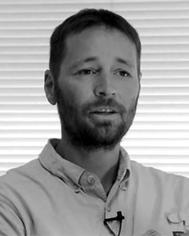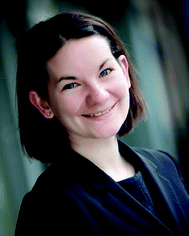Chemical signaling at the eukaryotic/prokaryotic interface
Pieter C.
Dorrestein
*ab and
Emily P.
Balskus
*c
aDepartment of Chemistry and Biochemistry, University of California San Diego, San Diego, CA, USA. E-mail: pdorrestein@ucsd.edu
bSkaggs School of Pharmacy and Pharmaceutical Sciences, University of California San Diego, San Diego, CA, USA
cDepartment of Chemistry and Chemical Biology, Harvard University, 12 Oxford Street, Cambridge, MA 02138, USA. E-mail: balskus@chemistry.harvard.edu
All living organisms have conversations with their neighbors. As humans, we have conversations that are traditionally defined by the use of words, signs and sounds. However, we are also continually participating in additional conversations that are usually not considered – the chemical signaling that controls human behavior, including sensation and mood. Pluskal and Weng (DOI: 10.1039/C7CS00411G) review the mechanisms of reception of such signals and strategies for disrupting them to modulate perceptions of taste, mood, smell, temperature, pain and itchiness. While these signals control human behavior, humans are now recognized to be walking ecosystems. Every person lives with 1–4 kg of microorganisms (the human microbiota). The estimated 1.3 trillion microbes that inhabit the human body have chemical conversations with neighboring microbes as well as the host. Excitingly, we are beginning to understand these interactions well enough to start engineering them to potentially benefit human health. Kenny and Balskus (DOI: 10.1039/C7CS00664K) describe the strategies used to engineer host–microbial chemical interactions in the setting of complex microbial communities.
While the above reviews describe chemical signaling in humans, all eukaryotes including plants, vertebrates, insects and fungi use chemical signals as a way to interact with their neighbors. Chagas, Pessotti, Caraballo-Rodriguez and Pupo (DOI: 10.1039/C7CS00343A) describe the status of chemical signaling in plant–microbe interactions, while Van Arnam, Currie and Clardy (DOI: 10.1039/C7CS00340D) describe the mutualistic nature of insect–microbe defense signals, and Calcott, Ackerley, Knight, Keyzers and Owen (DOI: 10.1039/C7CS00431A) cover the signaling of the fungal–prokaryotic lichen symbiosis and how this provides new opportunities for drug discovery.
The above examples of eukaryotic–prokaryotic interactions are just the tip of the iceberg, as chemical signaling is found in all planetary ecosystems. Indeed, fundamental understanding of this ecological language has been instrumental in guiding the discovery of new therapeutics and therapeutic leads. It is therefore important to continue to develop chemical strategies for deciphering the roles of these signals. As part of this themed issue, two forward looking reviews cover enabling strategies that are being developed by the scientific community to create a Rosetta stone for eukaryotic/microbial chemical signaling, with the goal of enabling the rapid translation of the signals into functional roles. The underutilized approach of chemical probing strategies to aid in deciphering signaling interactions is described by Gregor, David and Meijler (DOI: 10.1039/C7CS00606C). Brunetti, Neto, Vera, Taboada, Pavarini, Bauermeister and Lopes (DOI: 10.1039/C7CS00368D) describe the emerging integrated omics technologies that can be used to characterize these chemical conversations.
Moving forward, the development of new chemical technologies, including new structure elucidation strategies, new probe development, and integrated omics methods, may be the key to unlocking new insights into the chemical interactions among living organisms. New approaches for altering the chemistry of such interactions may make it possible to control various ecosystems. Proper understanding and control of chemical signaling may ultimately be applied to improve human health, quality of life, the quality of food supplies, management practices in agriculture and in many other applications. We hope this special issue will inspire a new generation of chemists to not only seek to understand chemical signals but also apply this knowledge to benefit the health of our world's ecosystems.
| This journal is © The Royal Society of Chemistry 2018 |


